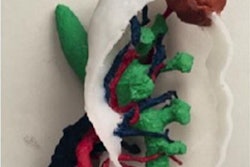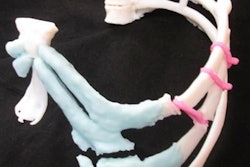Dear Advanced Visualization Insider,
As is generally the case with advanced visualization technologies, demonstrating distinct clinical value is a priority for 3D printing. In a new study out of China, a team of clinicians that included radiologists set out to accomplish that very goal.
The group's investigation underscored the potential of 3D-printed models based on CT scans to improve several aspects of kidney cancer surgery, from tumor identification to surgical outcomes, for more than 100 patients. The details of the study findings headline this edition's Insider Exclusive.
Medical 3D printing has been receiving a lot of buzz in recent weeks owing to the long-awaited launch of reimbursement codes on July 1. Will the four Current Procedural Terminology category III codes for 3D printing usher in a new wave of research and innovation, or will they fall short of expectations? A panel of experts on the subject discussed the possibilities in an interactive session at the Society for Imaging Informatics in Medicine annual meeting this past June.
So far, the potential benefits of 3D printing appear to support the upside of integrating the technology into clinical practice, if results from the following studies are any indication:
- Investigators from the Mayo Clinic in Rochester, MN, showed that using a patient-specific 3D-printed model of the chest wall to plan fracture repair conferred a wide range of benefits on surgical quality and patient outcome.
- Researchers from China also affirmed that 3D-printed models of rib structures helped decrease operating times for rib fracture repair.
- A separate team from China found that incorporating 3D printing technology into hip joint fracture repair led to significant reductions in surgery time and blood loss for dozens of patients.
Over the past few weeks, various groups have presented novel applications of augmented reality (AR) in medicine as well:
- Researchers from Canada developed a way to use AR to boost the accuracy of ultrasound-guided epidural injections.
- Scientists and surgeons from the U.K. explored the feasibility of using AR to guide a common minimally invasive surgery for urinary stones.
- Clinicians from Michigan described a proprietary technique for assessing pain on virtual 3D brain models in real-time using a combination of AR and artificial intelligence.
For more news and stories, head over to the Advanced Visualization Community at AuntMinnie.com. And feel welcome to request coverage for any relevant topics that pique your interest in the coming days.



















